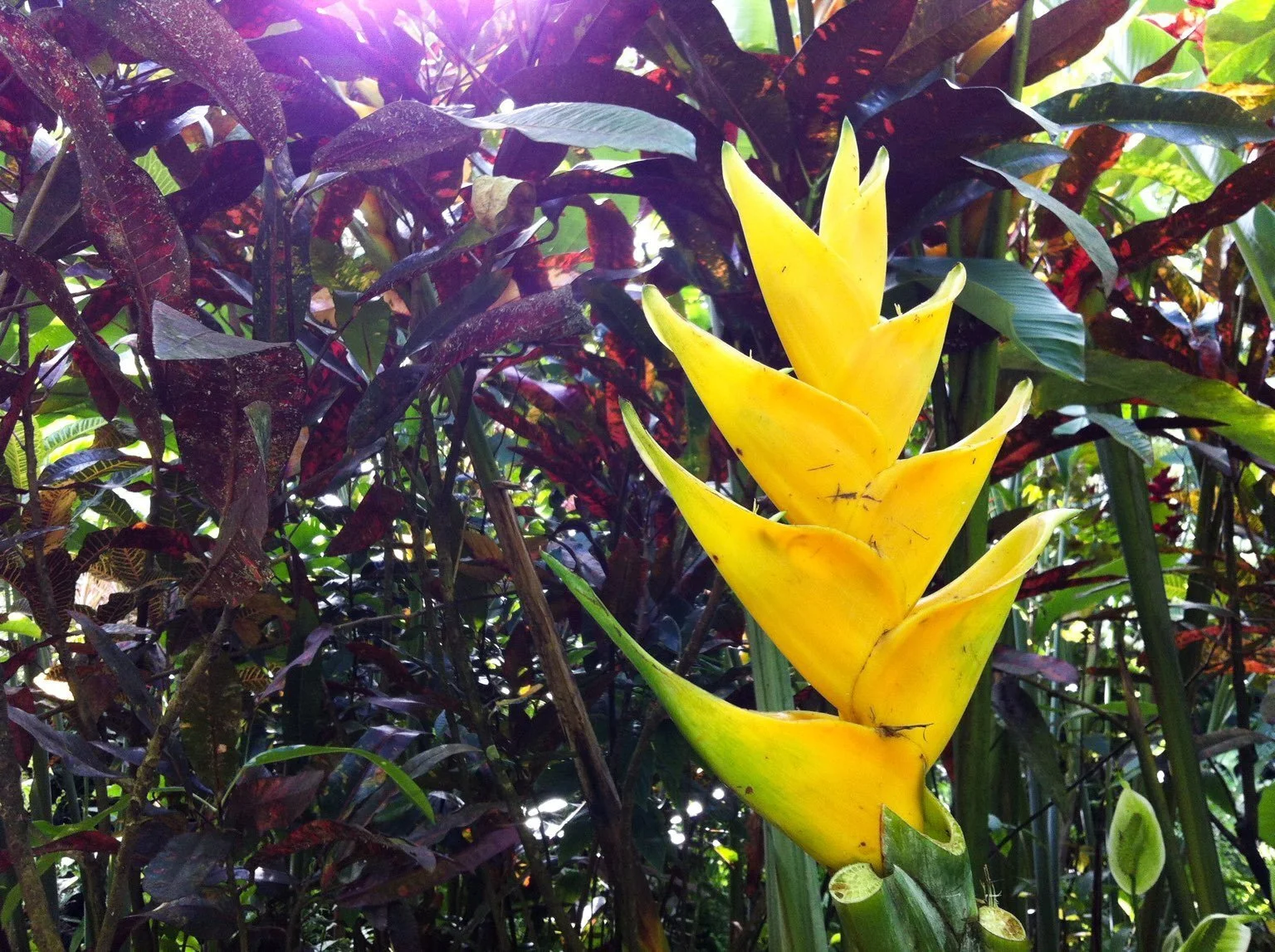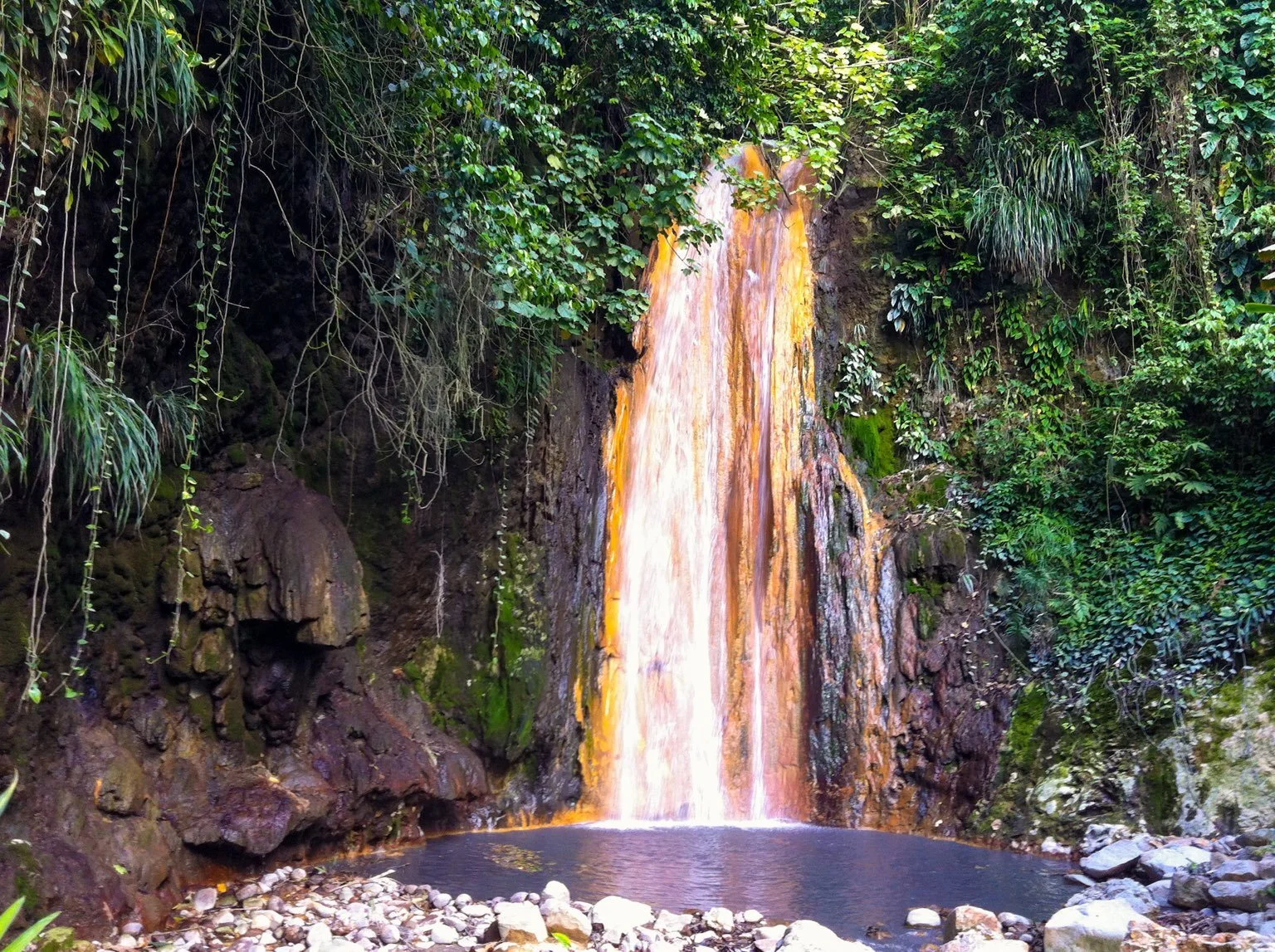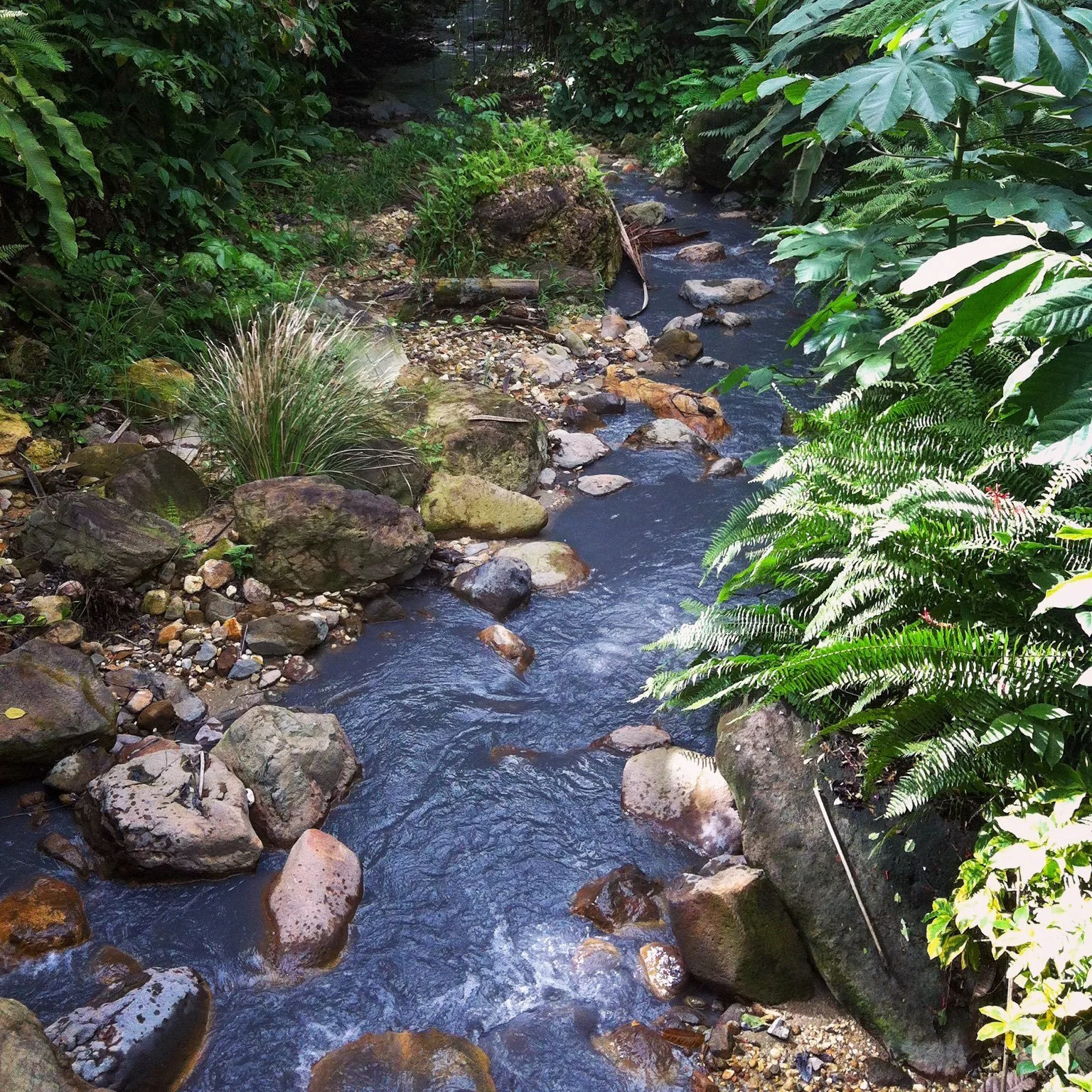
About Diamond Botanical Gardens and Soufrière Estate
The Diamond Botanical Gardens sit in a natural gorge that begins up the road at the world’s only drive-through volcano and bubbling Sulphur Springs.
The Sulphur Springs are weak spots in the crust of an enormous collapsed crater, the result of a volcanic upheaval that took place some 40,000 years ago.
Natural minerals found in the area include, Kaolinite and Quartz and smaller quantities of Gypsum, Alunite, Pyrite and Geotite.
The Diamond Waterfall, which flows of the Sulphur Springs further upstream.
In 1784, the Baron de Laborie, who was at the time Governor of St. Lucia, sent samples of the mineral water to Paris to be analyzed by the “Medicine du Roi”. The waters from the Diamond Springs were found to have the same properties as the famous Aix-les-Bains in France and Aix-la-Chapelle or Aachen in Germany.
Bathing in these therapeutic waters have always been recommended for persons who suffer from chronic rheumatism, respiratory complaints or ulcers, an opinion supported by John Davy in circa 1850, M.D., the Inspector General of military hospitals in the West Indies.
Dr. Davy did a more detailed analysis in 1854 elaborating on the mineral content of these “healing” waters.
The water is mineralized by the volcanic activity upstream, turning it this shade of graphite
Soufrière Estate is one of the oldest and best-preserved estates in Saint Lucia and was originally part of the 2000 acres of land granted to the Devaux family by King Louis XIV of France in 1713, in recognition of their service to ‘Crown and Country’.
In 1740 the three Devaux brothers came to St. Lucia to claim the land which at that time included the present site of Soufrière Town, as well as the Sulphur Springs.
This historical estate has been transformed from a working plantation that once produced limes, copra, and cocoa, into one of the major heritage sites in the region, as well as a viable and spectacular tourist attraction that includes the Botanical Gardens, Waterfall, Mineral Baths, Nature Trail, Old Mill Restaurant, and the historic Soufrière Estate House.
The King Restores the Baths
King Louis XVI was impressed by Medecin de Rois analysis of the waters. He allocated the necessary funds to have a stone building containing 12 stone baths erected. The baths were put to good use for several years, but during the Brigands War circa 1794- 1798 that followed on the heels of the French Revolution, the bath house, like so many other buildings, was destroyed. The baths stayed in a state of ruin until André du Boulay, the previous owner of Diamond Estate, restored them for his private use. Later with further restoration and the addition of changing facilities, these baths were then made available to the public.
The hot spring-fed public baths. For a more intimate experience, book the private baths at the gate.
The two original private baths are hidden away off the path and were restored with a water temperature that may require you to add cooler water to bring to a comfortable range. Additionally, there are three public pools that feed from the overflow of the original tanks up the hill.
These pools are situated in the open (pictured) and the temperature of the water is pleasantly warm. The warm water is clear and enjoyed by local bathers as well as visitors to the island. Bathing in the waters is highly recommended for people who suffered from chronic rheumatism, sore joints and muscles.
On-site there are changing rooms for visitor’s convenience, restrooms and also, a small gift shop and snack bar.
Present Day
Diamond Botanical Gardens is now a thriving tourism site, six acres of planted gardens, including Diamond Falls. The Diamond River comes straight from the Sulphur Springs, black from volcanic mud and spilling over the rock face, staining the stone wall with the many colours left behind by the minerals finally dropping into the calm pond below. In 1983, Mrs. Joan Devaux, daughter of Mr. André du Boulay took over the management of the Estate. Throughout the years Mrs. Devaux has continued the development and restoration of this beautiful estate.


